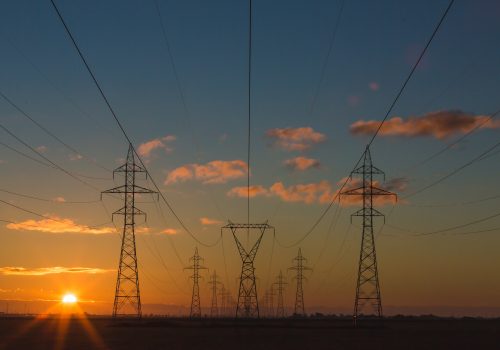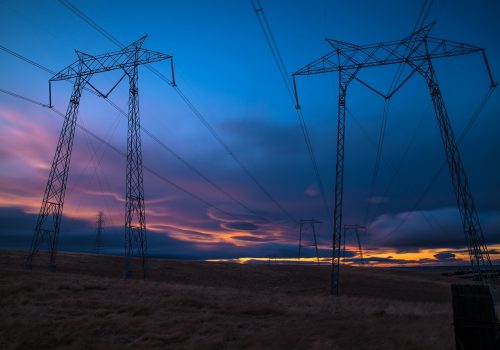What role can Energy Bridge play in Ukraine’s energy resilience?
The following is the first installment in a three-part series on the proposed Energy Bridge project, an energy development and regional energy interconnection initiative for Ukraine and its neighbors. The series covers issues and opportunities related to Energy Bridge from three viewpoints: Ukraine, the European Union (EU) and other international parties (e.g., the US), and Poland.
Energy insecurity in Ukraine has the potential to be even more destabilizing in the long-term than the conflict in the Donbass region. The US and the EU have been actively supporting Ukrainian efforts to reform its energy sector, with much attention paid to reducing Ukrainian dependence on Russian gas and to modernizing the Ukrainian gas sector. While the Trump administration is weighing in against the proposed Russian gas pipeline into Europe, Nord Stream 2, due to its potentially harmful impact on Ukraine’s economic and security situation, the attention paid to Ukraine’s gas sector needs to be complemented with a stronger focus on Ukraine’s electricity and nuclear power industry.
For the last two years, nuclear-generated electricity comprised roughly half of Ukraine’s total electricity generation, and is a key part of Ukraine’s energy security strategy. For Ukraine, energy security reflects not only diversity of suppliers but also diversity and reliability of sources. Ukraine’s plans for its nuclear capacity, national security, and foreign policy are reflected in the Energy Bridge proposal, an idea presented to the Ukraine government in 2015.
Energy Bridge was presented to Ukraine’s Cabinet of Ministers in 2015 following the Russian invasion of Crimea. Energy Bridge would be led by the state-owned utility Energoatom and starts with a connection of Ukraine to the EU electricity system to sell power from unit #2 of the Khmelnitsky nuclear plant.
Specifically, Energy Bridge involves direct cross-border links between Energoatom’s Khmelnitsky unit #2 and Poland, Hungary, and possibly the Baltic states. For now, only a small part of the Ukrainian power system is linked to Hungary (through the Burshytn energy island) and Energy Bridge aims to integrate this connection. The revenues from selling nuclear electricity into Europe could initially help the finances of Energoatom and the deal might be expanded over time to fund two new nuclear reactors at the Khmelnitsky site (originally started by Rosatom, but since abandoned).
For Ukraine, the proposed strategic and financial benefits are clear—Energy Bridge enables the provision of nuclear generated electricity from Ukraine to Poland, and possibly deeper into Europe, catalyzing closer linkages between Europe and Ukraine relatively swiftly. Moreover, the connection uses existing transmission lines rather than new infrastructure. Ukraine will receive much needed hard currency from electricity sales to EU countries, helping offset natural gas transit fees that will be lost in 2019 when Ukraine is slated to terminate its contract with Russia’s Gazprom. This additional revenue could also be used to support market-driven pricing and modernization of Ukraine’s natural gas sector.
Energy Bridge would also contribute to Energoatom’s efforts to improve the output and reliability of its entire nuclear power fleet, building on earlier efforts to enhance the security of nuclear fuel supplies.
If successfully implemented, Energy Bridge has potential to contribute to the economic well-being of Energoatom and to help ensure reliable and economic electricity for Ukraine’s national resiliency, economic growth, and political stability.
Buttressed up against its own timeline to implement its Energy Security Strategy 2035 and the looming 2019 expiry date for the Russian-Ukrainian gas transit contract, Kyiv may be tempted to forego geoeconomic and geostrategic considerations when seeking financing or partners to support its overall energy security vision, including Energy Bridge. Ukraine’s national and regional energy security necessitates evaluating foreign investments into critical infrastructure for potential debt traps, negative outcomes for foreign policy, and long-term dependencies. This is especially the case in nuclear energy where decades-long relationships are created between builders, owners, and operators.
The mechanism envisioned by Ukraine to implement this strategic plan is pending Parliamentary permission to issue a public tendering process. Ukraine government efforts to reduce corruption, ensure energy reforms, and liberalize its markets have been slower than anticipated, but Kyiv’s declarations of change and legislative reform are encouraging .
Energy Bridge may be a viable alternative for Ukraine to take steps to enhance its own energy situation while forging new links to the EU. Energy Bridge is not without risk and should be evaluated in light of issues including European competition for electricity exports; grid cybersecurity; sovereign nuclear power initiatives; Europe’s reluctance to include nuclear energy as part of its plan for diversification, and the continuing European focus on renewables. Energy Bridge also faces issues in Ukraine, including 2019 elections and Ukraine’s seemingly ineradicable corruption challenges. Resolving these issues will not be easy.
Time is running out before the 2019 Gazprom transit contract is due to lapse. If implemented correctly, Energy Bridge could comprise a significant pillar of Ukraine’s overall energy resilience. In pursuing a commitment to modernization and anti-corruption in the nuclear sector and Energoatom itself, lessons from Naftogaz should be sought.
Energy Bridge provides a viable option worthy of further scrutiny for Ukraine to attain energy and national security.
In Part 2 of this series, we discuss the Energy Bridge project from the viewpoint of the EU and other international parties and in Part 3, we will discuss this Energy Bridge project from the Polish point of view.
Melissa Hersh is a strategy and risk consultant at Hersh Consulting, a faculty associate at Arizona State University (ASU) College of Public Service and Community Solutions; research associate at the ASU Center for Emergency Management and Homeland Security; and NECG affilate. Edward Kee is the CEO of the Nuclear Economics Consulting Group (NECG). You can follow Edward on Twitter @EdwKee
Related content
Image: Transmission line (photo by Mike Wilson on Unsplash).


